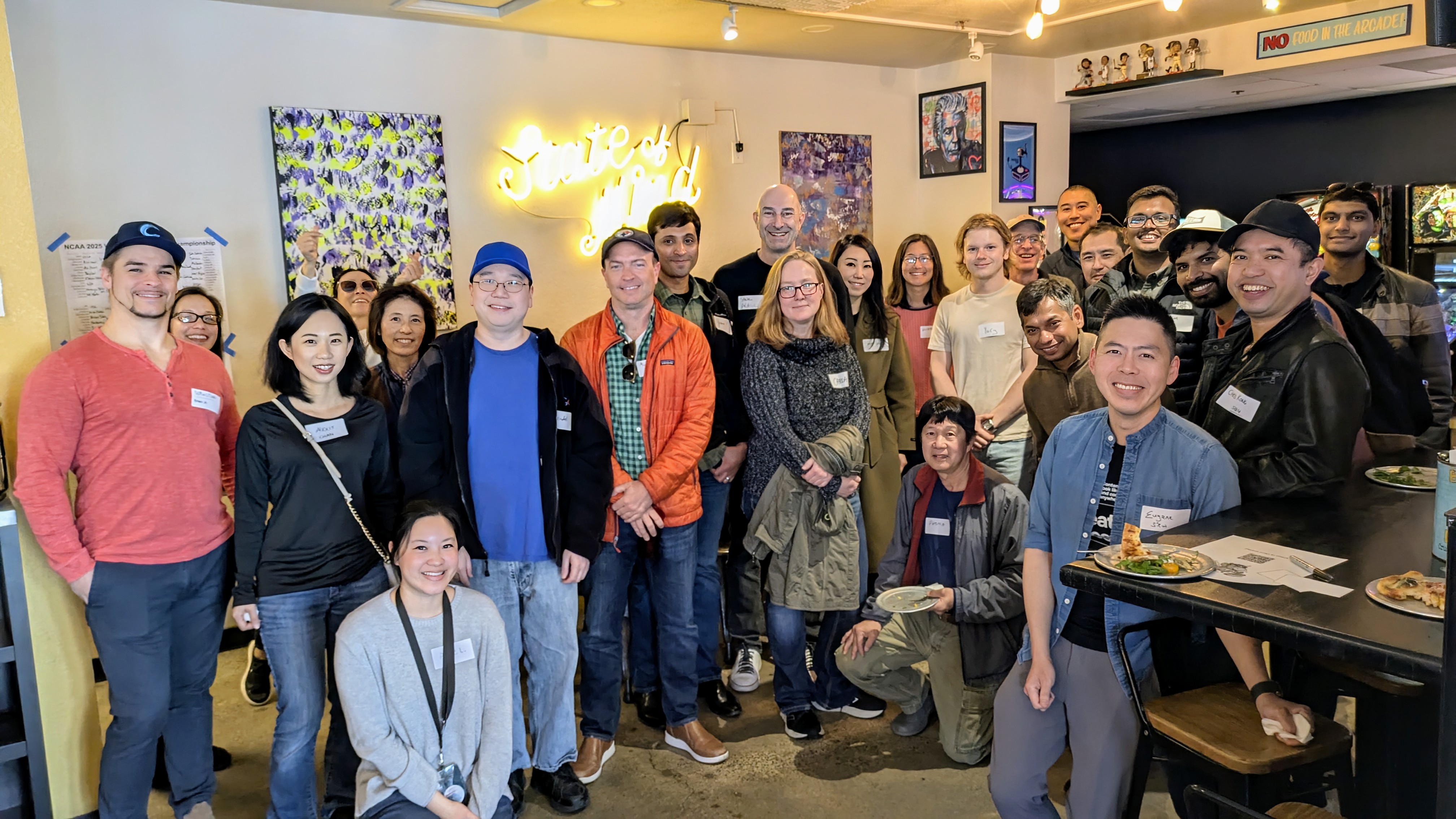Elad Gil Investments: Lessons from Backing 40+ Unicorns on Founder Quality and Market Timing
.png)
Brian Nichols is the co-founder of Angel Squad, a community where you’ll learn how to angel invest and get a chance to invest as little as $1k into Hustle Fund's top performing early-stage startups.
If you haven't heard of Elad Gil, you're missing one of Silicon Valley's most successful angel investors. His portfolio reads like a who's who of the last decade's biggest winners: Airbnb, Stripe, Coinbase, Pinterest, Square, Instacart, and about 40 other unicorns.
But here's what makes studying Elad Gil investments valuable: his success isn't random. There are clear patterns in how he evaluates companies, when he invests, and what he looks for in founders. And these patterns translate directly to actionable insights for early-stage investors.
From Google and Twitter to Angel Investing
Gil was an early employee at Google where he helped build the mobile team and worked on Google Mobile Maps. He then co-founded Mixer Labs, a location-based service that was acquired by Twitter for approximately $5 million. At Twitter, he served as VP of Corporate Strategy, running various product teams including Geo and Search.
This background matters. Gil isn't a career investor who never built anything. He knows what it takes to ship products at scale. He understands the operational challenges of going from product-market fit to massive scale.
Gil started angel investing organically by helping friends with their startups. His entry into investing was through friends who sought advice and subsequently invited him to invest. Word of mouth from being helpful led to more investment opportunities.
The lesson for early-stage investors: the best deal flow comes from being genuinely helpful. Don't lead with your checkbook. Lead with your expertise.
The Framework: Founders, Markets, and Timing
Looking across Elad Gil investments, three factors consistently drive his decisions:
Founder Quality Above Everything
Gil's method for evaluating startups starts with the founder, wanting to understand not just their background but their ability to execute and adapt.
But what does "founder quality" actually mean? It's not about pedigree or previous exits. Gil emphasizes the importance of understanding how the team functions and their ability to execute, looking for teams that can adapt to changing market conditions.
The tactical question to ask: has this founder actually shipped products before? Not just at a big company, but independently? Can they point to specific things they've built and iterated on based on user feedback?

Market Size That Actually Matters
Gil advises understanding the market size and dynamics before investing in a company, evaluating whether you or an enterprise would actually use the product or service being offered.
Here's where Gil's approach differs from many investors: he's not just looking at TAM slides. He's asking whether the market is genuinely large enough to support multiple successful companies or whether it's winner-take-all.
Gil notes that a great team in a bad market often results in the market prevailing, emphasizing the importance of being market-driven rather than just founder-driven.
For early-stage investors, this creates a framework: don't invest in amazing founders building products for tiny markets. And don't invest in huge markets where the timing isn't right yet.

Timing and Inflection Points
Investment interest can fluctuate dramatically, with companies sometimes struggling to raise funds in one round but attracting significant interest in subsequent rounds.
This is where Gil's operational experience shines. He can identify when a market is reaching an inflection point where adoption will accelerate.
Take his Airbnb investment. Gil provided advice to Airbnb founders during their Series A and subsequently invested alongside Greylock and Sequoia. The seed round wasn't initially competitive, but interest spiked when Sequoia decided to invest.
The tactical lesson: the best investments often come when you're slightly early to a trend, not when everyone's already piling in. But "slightly early" requires understanding what market triggers will drive adoption.
The Hands-Off Approach
Gil takes a hands-off investment approach, preferring to focus on a few key processes rather than overcomplicating with excessive structure.
This might sound counterintuitive. Shouldn't investors be heavily involved? But Gil's philosophy is different: hire great founders, then get out of their way.
However, Gil encourages founders to actively involve investors by treating them as an investment team, with each investor bringing different expertise and connections to specific aspects of the business.
The framework for founders: set calendar reminders to reach out to key investors periodically on specific topics where their insights could be valuable. For investors: be accessible when founders need you, but don't hover.
The Portfolio: What Gil Actually Backs
Let's look at some actual Elad Gil investments to understand his pattern:
Airbnb: Gil saw potential long before it became a household name. Stripe: Gil invested when Stripe was just looking to simplify online payments. Coinbase: Gil saw the value in crypto when it was still a niche market.
More recently, Gil's AI-focused investments include companies like Braintrust (an AI evaluation company), Character, Decagon, Harvey, Mistral, Perplexity, and Pika.
The pattern? Gil backs infrastructure companies at the earliest stages of massive platform shifts. He doesn't wait for consensus. He builds conviction early.
The Evaluation Framework
Gil's investment criteria includes: understanding market size and dynamics, evaluating whether you or an enterprise would use the product, being willing to lose all money on investments, focusing on how teams function and execute, looking for companies with clear value propositions, and assessing long-term sustainability and growth potential.
Let's make this tactical:
Market validation
Would you personally pay for this product? Would your friends?
Team assessment
Can they articulate exactly why customers buy, and what alternatives customers are replacing?
Risk tolerance
Are you actually willing to lose 100% of this investment? If not, don't write the check.
Execution evidence
Can they point to specific operational systems they've built?
Five Tactical Takeaways for Early-Stage Investors
1. Build conviction before consensus
Gil's biggest wins came from investing before everyone agreed these were good ideas. Don't wait for social proof.
2. Assess founder adaptability, not just vision
Great teams in bad markets often fail. Look for founders who can adapt when their initial thesis is wrong.
3. Use your operational experience
Gil's background building products at Google and Twitter gave him pattern recognition for what works. What's your unfair advantage?
4. Be helpful first, investor second
Gil's best deal flow came from being genuinely helpful to founders before writing checks.
5. Keep it simple
Gil prefers focusing on a few key processes rather than overcomplicating with excessive structure. Don't over-engineer your investment process.
The Bottom Line
Elad Gil investments reveal something important: success in early-stage investing comes from developing strong conviction about market timing and founder quality, then acting on that conviction even when consensus hasn't formed yet.
Gil isn't making random bets. He's systematically backing founders at inflection points in massive markets. And he's doing it with a surprisingly simple framework that any early-stage investor can adapt.
For angel investors, the lesson isn't to copy Gil's portfolio. It's to develop your own framework for identifying inflection points in markets you understand deeply.
Communities like Angel Squad bring together investors who focus on building conviction through understanding markets and founders, not just following the herd.
The biggest returns in early-stage investing come from being right when others aren't sure yet. That requires developing judgment about founder quality, market timing, and your own areas of expertise. Gil has done this better than almost anyone. And the principles behind his success are remarkably accessible to any investor willing to put in the work.













